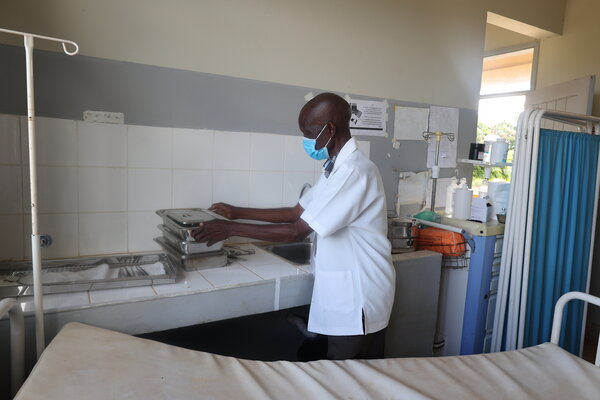-
Project NameHealth Promotion in Cabo Delgado
-
Project Phase2022 to 2026
-
FundingSwiss Agency for Development and Cooperation
-
Thematic focusWASH Services
Situation Analysis
National Health Service
The delivery of healthcare increased considerably in the province. However, the system is faced with huge challenges with regards to being able to fulfill the increasing health needs. The response capacity is still limited in terms of sanitary network, human and financial resources. Population growth, rapid urbanization, and change in the epidemiological profile are some of the challenges for which the health system needs to be better prepared so as to be able to provide an adequate response to the province’s health problems. Albeit the progress that has been registered, the system is still affected by various limitations: The urbanization process did not evolve hand-in-hand with the adequate and necessary socio-economic infrastructure. This situation causes a state of fragility and of high social and health risk within the urban areas as well as in areas that in the process of rapid demographic and spatial expansion.
The analysis of the causes reveals different constraints for both supply and demand, which include:
- Low usage rates of some of the health services and poor adherence to some of the health programmes.
- Low coverage of health services, and this situation will only worsen if population growth is not accompanied by the necessary expansion of infrastructure (sanitary network, human and financial resources)
- Low usage of services due to various factors, such as lack of knowledge, low quality of services (including bad reception and/or lack of adequate communication), long distances coupled with the lack of transport and lack of money.
- Scarcity, inadequate distribution and inefficient use of the existing resources, such as: human resources (high turnover), transport, equipment, medication and medical items.
- Limited access to infrastructure, in general: access routes, communication, electricity, water, etc.
- Limited management and planning capacity at the various levels of the system in the province
- Weak capacity to invest and rapidly expand the formal health network.

General Objective:
- To improve the health conditions of the population of Cabo Delgado, with a focus on reducing morbidity and mortality in women and children under 5 years of age in the target Districts.
Strategic Objectives:
- Increase institutional capacity for integrated health, water and sanitation service delivery at the target district level.
- Strengthen community participation mechanisms in planning, budgeting and accountability and oriented towards a health, water and sanitation promotion approach at the target district level.
- Obtain documented lessons from the project that feed into the policy and strategy-making process in the health, water and sanitation sectors.
Expected Outcomes:
- Increased capacity in the provincial directorates of health, public works and finance to plan, coordinate, supervise and provide capacity building actions to the districts;
- Integrated health, water, sanitation and hygiene actions in PESOD and PESOP
- Increased allocation of financial resources for the provision of health, water, sanitation and hygiene services in targeted districts
- Improved quality of basic health, water, sanitation and hygiene service delivery in type I and II health facilities
- Strengthened the internal governance and intervention capacity of the Community-Based Organization (CBO)'s (committees);
- Integrated into the Advisory Councils the CBO's (committees);
- Advisory Councils identify and prioritize health, water, sanitation and hygiene actions in the planning and budgeting cycle.
- Documented and disseminated the processes, good practices, and lessons learned.
- Created spaces for discussion and dialogue at provincial and central levels.
- At least one sector policy or strategy (health promotion & water, hygiene and sanitation) influenced.

